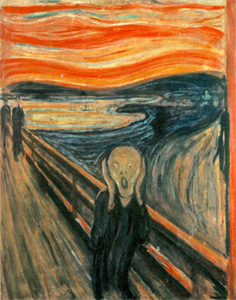February 2, 2009
The Fallacy Of “No Safe Level”

By Michael D. Shaw
In the wake of the FEMA trailers and the recalled toys from China—to say nothing of the hype surrounding the Consumer Product Safety Improvement Act of 2008 (CPSIA)—you may have heard some pundit say that “There is no safe level of (fill in the name of your favorite toxic substance).” Unfortunately, many people are influenced by such non-scientific prattle, so we will examine this concept.
The “no safe level” theory most likely got its start in the nuclear industry, where it is called the Linear-Nonthreshold Dose-Response Model (LNT). This model holds that any exposure to ionizing radiation (other than zero) is harmful, in that damage to a single cell could be sufficient to cause cancer. And, the higher the dose, the more extensive the damage. As such, there is no “threshold” level below which damage would not occur.
LNT was evaluated by the National Council on Radiation Protection and Measurements in 2001, and they determined that:
“…there is no conclusive evidence on which to reject the assumption of a linear-nonthreshold dose-response relationship for many of the risks attributable to low-level ionizing radiation although additional data are needed. However, while many, but not all, scientific data support this assumption, the probability of effects at low doses such as are received from natural background is so small that it may never be possible to prove or disprove the validity of the linear-nonthreshold assumption.”
Note here that the natural background is acknowledged, and that proving (or disproving) the theory is probably not possible. By acknowledging that a natural background level of radiation exists, the necessary conclusion is made that our bodies can and do deal with these small levels, such that no harm is actually caused. Alternatively, one could posit that even background levels of radiation—which we are all exposed to—can cause cancer. I would reply that if that is the case, why worry about any other sources?
A riff on this is the toxicologist’s argument against LNT: If there is no safe level, why bother doing any health effects research at all?
Lead is regulated under CPSIA as follows:
- Beginning 180 days after the date of enactment of this Act (10 February 2009), the lead limit is 600 parts per million total lead content by weight for any part of the product.
- One year after the date of enactment of this Act (14 August 2009), the lead limit is 300 parts per million.
- Three years after enactment of this Act (14 August 2011) the lead limit is 100 ppm (if technologically feasible).
Lead can be extremely damaging to developing brains—especially in utero and many shrill commentators, speaking in support of CPSIA, note that “There is no safe level of lead.” Yet, the very law they champion does, in fact, specify a succession of safe levels, and even allows the possibility of waiving the 100 ppm requirement, should it not be feasible. Instead, the Consumer Product Safety Commission must then establish the lowest feasible amount below 300 ppm, and review this finding at least every five years.
But, this is only logical. No law can be written proclaiming a standard of zero. As measurement technology develops, the notion of “undetectable” gets smaller and smaller. Enforcement must always be based around a measurable standard.
More than that, “no safe level” cannot possibly be applied in any other real life situation. For example, under a regime of “no safe level,” no pharmaceutical drug could exist, as nearly every drug has some dangerous side effect that could affect one out of a million people.
People drive all the time, yet driving is far from 100% safe. Should parents stop allowing their kids to participate in sports given the very real possibility of injury?
As far as I’m concerned the only appropriate use of “no safe level” would be in this sentence: There is no safe level of the public being exposed to any commentary that includes “no safe level.” Remember that “no safe level” inspired the draconian mess that is CPSIA.
As always, good science plus common sense equals good public policy.

